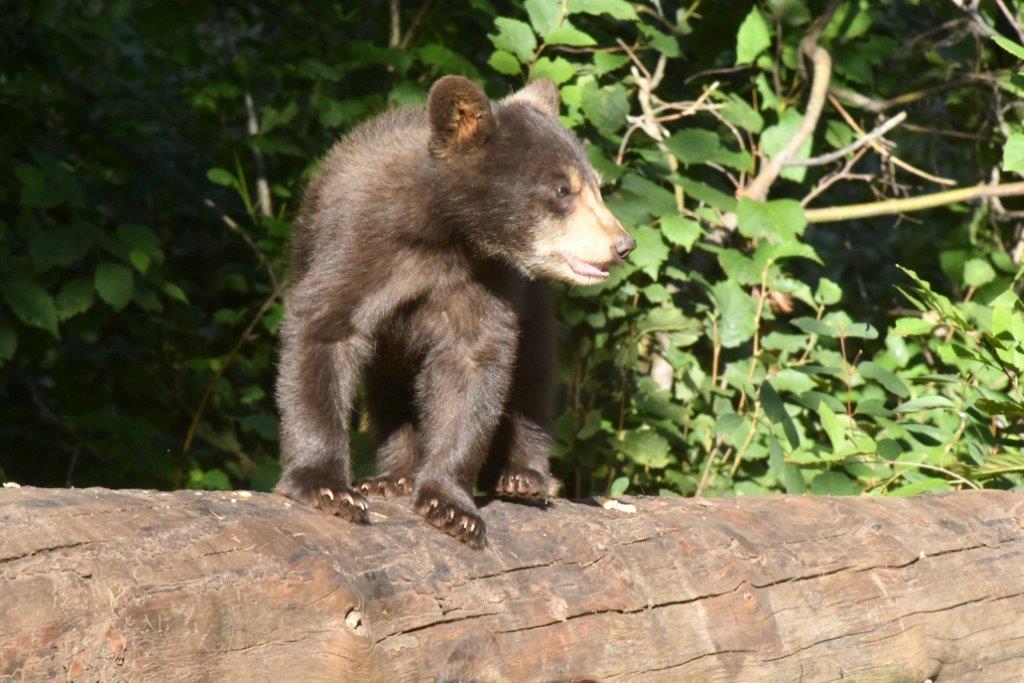Daily Updates
Ted?s Big Move and More - UPDATE August 20, 2020
20 August 2020
Print Email
Cinnamons male cub
Cinnamon's male cub

Ted has been tiring out with the number of behind the scenes tours we have run this summer because of covid restraints on the number of people per tour. To respect his fatigue, we are moving him to more appropriate quarters. We are shifting Lucky to Ted?s old digs where we bring most of the tours. To keep things fairly familiar for Ted, we sent his den Chalet along with him. That took big equipment. The video shows the action and ends with Ted entering his new home. As Ted entered the gate, he was limping somewhat. That?s why the staff had the new pen graded to make it more level for Ted to get around. Everyone agreed that the move was needed. We will continue to bring some behind the scenes tours to Ted, but not as many, as we have seen him wearing out.
https://www.youtube.com/watch?v=A-GdnhSE3LYCinnamons female cub
Cinnamon's female cub

At the WRI, ID photos now show how the faces of Cinnamon?s male and female cubs differ. The dark part of the cheek of the female extends down farther than the male?s. The male has dark under his eye and then a light patch below it. It was simple once we knew which cub we were looking at.
On the pontoon ride with the course participants a couple days ago, we checked on the loon family. It?s been three years since they were successful in raising young. This year they are doing it. Both babies are now diving and catching fish themselves while a parent brings them additional fish. The youngsters have lost their fluffy feathers and are now growing the feathers that will fly them to the Atlantic Ocean. Over the next 3 years or so they will transition into the mature plumage for their return. We took the baby shot from a great distance. Then the parent apparently read our minds and came up near the pontoon boat. A nice surprise. Loons are beautiful.
Today?s surprise was seeing a newly fledged phoebe land on a branch as if to wait for food. Hurried to grab a camera but did not get back in time to get the parent feeding the baby or to set the depth of field to catch both in focus. The shot shows the baby opening its mouth to ask for more. I was glad to see a fledging of this second nesting. I don?t know how many there are.
Phoebe with fledgling
Phoebe with fledgling

Loon juvenile
Loon juvenile

Loon
Loon

Also, someone sent me a 4-minute video that made her cry to see the beauty of the Ely area. I don?t know how the producer found so many nice pictures, but I was proud to see that they included some of mine as well as the iconic picture of Lily that all of you will recognize. You will also see photos of the Bear Center's late Ambassador Bear Honey. This is the beauty that makes some of the Black Bear Field Course participants schedule a few extra days for an outfitter to set them up for canoeing and camping.
https://www.youtube.com/watch?v=CgGgCrMkdz4Thank you for all you do.
Lynn Rogers, Biologist, Wildlife Research Institute and North American Bear Center

 Author
Topic: Jewel and her cubs (Read 2258857 times)
Author
Topic: Jewel and her cubs (Read 2258857 times)
